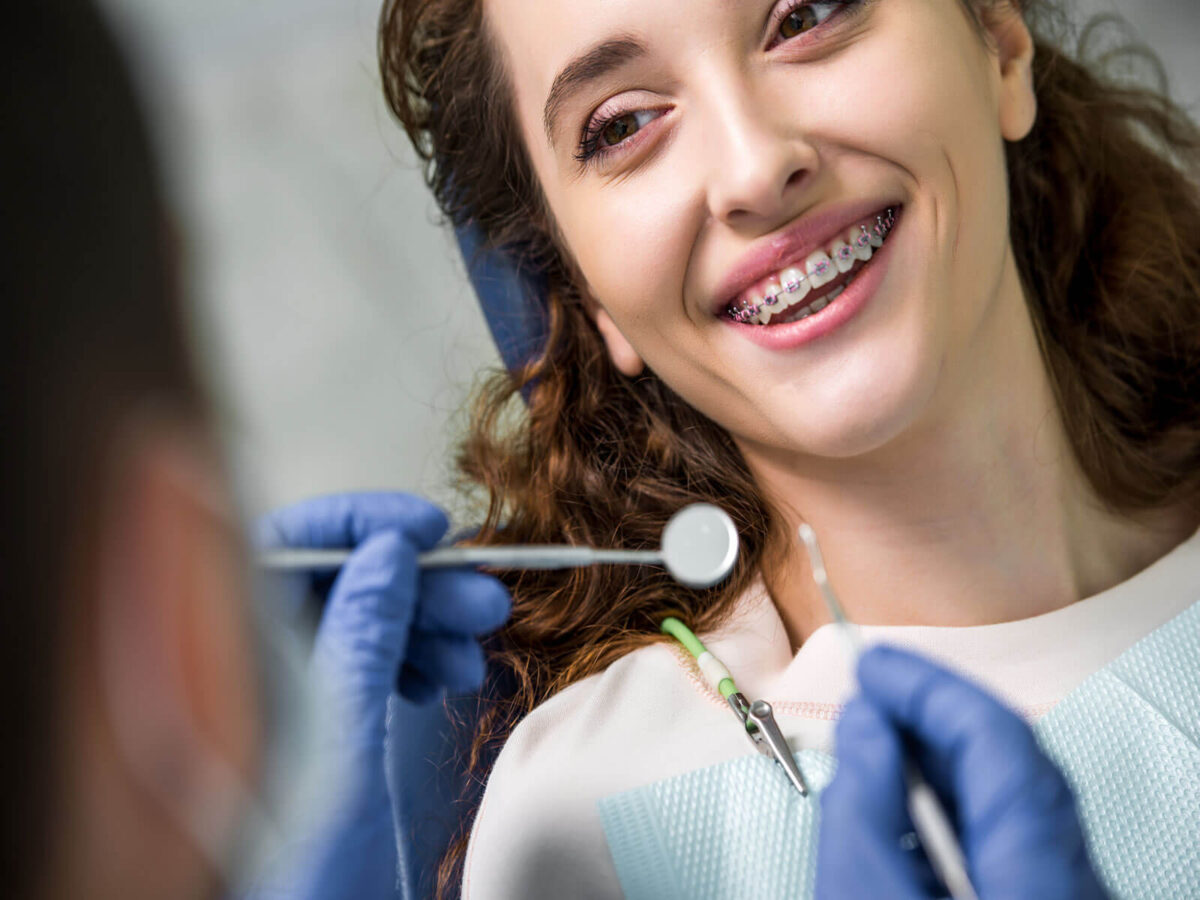Blog
Dental hygiene tips for healthy teeth & gums

When Do I Get My Braces Off?
Starting orthodontic treatment with braces is essential to having a straighter, healthier smile. Many people worry, “When do I get my braces off?” as the day to say goodbye to their braces approaches. In this complete guide, we will look at the factors that influence the timing of brace removal, the symptoms that indicate it’s time to remove braces, and what to expect during the procedure.
When Do I Get My Braces Off?
1. Treatment Plan and Complexity:
Importance: The complexity of your orthodontic issues and the treatment plan set by your orthodontist play a critical part in deciding the duration of your braces treatment.
Variability: The time required to remove braces varies from person to person, ranging from a few months to a few years, depending on the severity of misalignments and the intended outcome.
2. Age and Growth:
Importance: Age and growth patterns influence how quickly teeth and jaws respond to orthodontic stresses. Because of continual growth, younger people may experience faster changes.
Individual Variation: Everyone’s response to orthodontic treatment is different; some people may see faster changes than others.
3. Orthodontic Instructions Compliance:
Importance: Strict obedience to orthodontic instructions, such as wearing rubber bands, headgear, or other prescribed appliances, has a substantial impact on treatment progress.
Patient cooperation: Patients who follow their orthodontist’s suggestions religiously frequently have more predictable and timely results.
4. Misalignment Severity:
Importance: The treatment time is affected by the severity of the orthodontic issues being treated. Complex situations may necessitate a more extended treatment duration.
Pre-treatment Evaluation: Your orthodontist will evaluate the original state of your teeth and jaws to determine the time required for correction.
5. Braces and Appliances:
Importance: The type of braces and other appliances that impact the treatment timeline. Traditional metal braces, ceramic braces, and transparent aligners have various implications for tooth movement. Advancements in orthodontic technologies, such as rapid orthodontics, may provide choices for shorter treatment time frames in some circumstances.
Signs that braces are about to be removed:
a. Treatment Goal Achievement:
Indication: When the orthodontic goals indicated in the treatment plan have been met, it may be appropriate to remove the braces.
Your orthodontist will evaluate the alignment, spacing, and bite relationships to determine whether or not the treatment objectives have been reached.
b. Outcomes Stability:
Indication: Stable outcomes, in which teeth remain in corrected positions without relapse, are required before braces removal.
Retention strategy: To maintain the acquired results, your orthodontist may propose a retention strategy, which may include the usage of retainers.
c. Evaluation of Alignment and Bite:
Indication: Proper alignment and bite relationship is crucial for successful braces removal.
Evaluation: Your orthodontist will assess how well your teeth fit together and whether fine adjustments are required.
d. Treatment Progression:
Indication: Consistent progress in tooth movement and alignment during treatment indicates that the end of treatment is near.
Regular check-ups with your orthodontist allow for treatment progression monitoring and changes as needed.
What to Expect When Having Braces Removed:
a. Appointment for Evaluation:
Before the removal, you will have an evaluation visit during which your orthodontist will evaluate your final alignment and bite.
Discussion: Your orthodontist will review the results and the next steps, including retention tactics.
b. Braces Removal Procedure:
The braces removal procedure is usually simple. The brackets are carefully removed from each tooth, and any remaining glue is removed.
Discomfort: While the procedure is painless, you may feel moderate discomfort or pressure when the braces are removed.
c. Retainer Assignment:
After removing your braces, your orthodontist may place retainers to help keep your teeth in the ideal positions.
Retainers are classified as follows: Retainers can be fixed or removable, and your orthodontist will discuss which choice is best for you.
d. Aftercare Instructions:
Guidance: Your orthodontist will give you post-removal advice, including how to care for your retainers, dental hygiene habits, and any dietary restrictions.
Follow-up appointments will be organized to check the stability of the results and make any necessary modifications.
e. Rejoicing in the Transformation:
Reflection: Removing your braces symbolizes the end of your orthodontic journey. Enjoy the transformation and the work put in to get a straighter, healthier smile.
Conclusion
Several factors determine when to remove braces, including treatment plan, age, compliance, severity of misalignment, and treatment progress. Achieving treatment goals, sustained results, appropriate alignment, and steady improvement are all indicators that brace removal is approaching.


